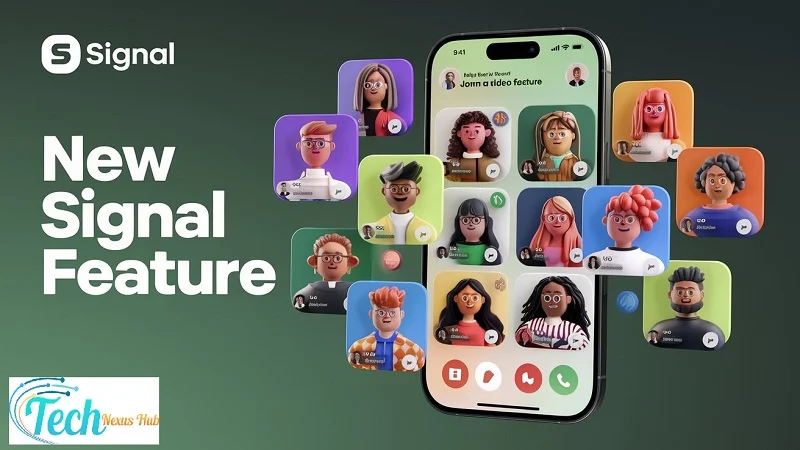Signal is upping its SKY-based ant with a suite of new video call features that will directly compete with Zoom, Google Meet, and Microsoft Teams. Signal now offers a new tab called Calls which integrates new and improved management tools for video calls into the app. This tab is dedicated to call history and directly gets you to start fresh calls or handle in-progress calls.
Signal's New Video Call Features Challenge Zoom and Teams
The key distinctive feature is the possibility of unique call links generation. This facilitates the provision of individual links to participants instead of developing many groups. The functionality is made to work in a not-complicated manner, so it can work well during online team meetings, 1:1s, and other online events.
Using call links, Signal also provides relevance and capability to reuse them and save time for those organizing repeat meeting sessions. Like other meeting platforms, which include Zoom and Google Meet, this facilitates sharing of the link a single time and has it used successively in subsequent meetings without the need to create a new link every now and then.
The incorporation of reactions in video calls is also the other form of interactivity. Emoji reactions have also been added in order to allow users to share more content in a discussion, with the comments and suggestions interrupting the speaker less in a meeting.
By installing these new features, Signal is gradually presenting itself as a secure, private platform capable to rival normal video communication services. The calls are encrypted end-to-end and oneself an upstanding feature among other most significant players in the video conferencing market.
Signal Adds New Call Management Features for a Seamless Experience
Signal can now roll out a range of standard call management features that will benefit both hosts and participants. Customers can now assign a name to their calls, which helps to sort current meetings properly. This feature was selected because it brings personal touch/venience, that was an issue in the first place.
Another feature of the hosts is that they are able to whitelist members, to be allowed to join a call. This control also helps in security and only the right persons are given the opportunity to join the meeting. As an added measure, the host also can also kick or mute and remove participants during the call, making it a solid solution for hosting massive meetings virtually.
One of the improvements is that the ability to virtually raise a hand during the meeting is integrated, resembling the function present in Google Meet. I used this basic device to facilitate the enhancement of the communicative process and keep track of the discipline observed within large groups in the course of the discussion.
The addition of flexible viewing options for video calls has given desktop users more capacity in Signal. People have the option to toggle between grid view, sidebar view or speaker view depending on the dynamics of the meeting. This is important so that the users can always turn to the speaker while in other instances see all the participants.
With these upgrades, Signal is unfolding its video call capital further, making it a decent option of secure, customizable video conference tools. These features are incorporated in the platform indicating that it is fully designed to act seamlessly, as a friendly, non-frustrating video conference tool as against other similar tools.
Signal and WhatsApp: Competing for Video Call Dominance
Signal has been unveiling secure communication since it began offering encrypted group video calls way back in February 2020. Currently, the app allows the user to make calls involving up to 50 other people, rendering it quite useful for larger remote meetings at the same time allowing the platform to remain true to their principles of clients’ privacy and confidentiality.
On the other hand, there is no mention of call links until 2022, from which WhatsApp has continued to add a range of features intended to improve the application’s video call capabilities. The app now features up to 32 participants on video calls, new tools as screen sharing and speaker highlighting to increase user engagement in meetings.
Unexpectedly video calls have assumed more importance than the physical calls in the current sociable world even in the professional context. Given that people have become accustomed to working remotely, they use those platforms to stay connected regardless of the time zone or geographical location.
This larger participant ability makes Signal a competitive player in the video conferencing market especially for a user who is keen on security. While users interested in the extra options, greater convenience provided by WhatsApp attracts those who are ready to operate in the less secure but more popular service.
Both applications are eager to meet the increasing consumer interest in a proper video call service. Since people spend much of their working time employing these platforms and build relationships as well, there is likely to be fierce competition between Signal and WhatsApp with each improving its features to suit the changing society.


